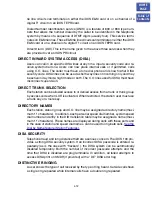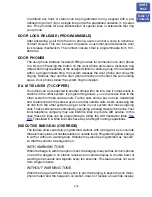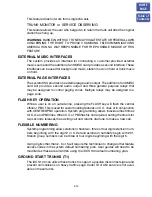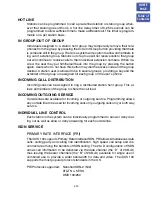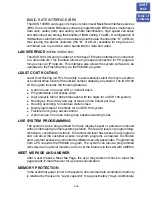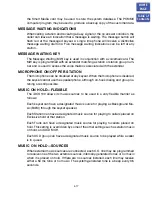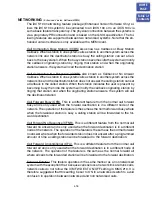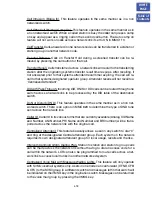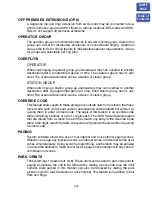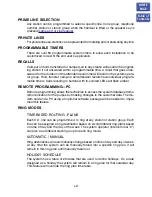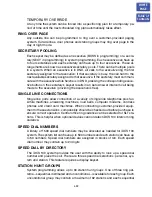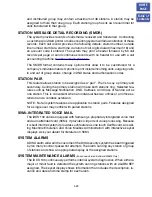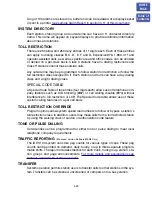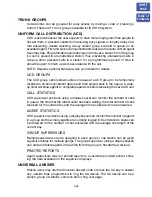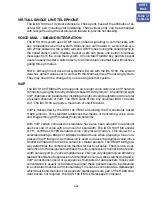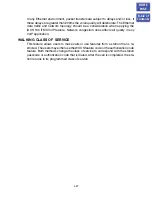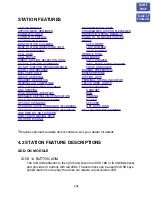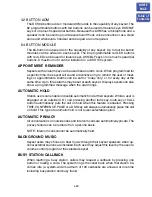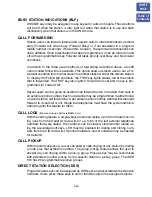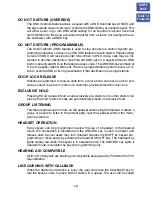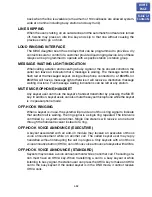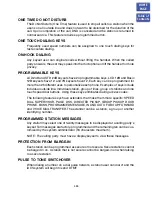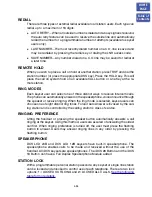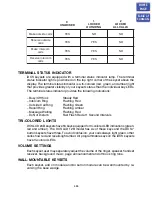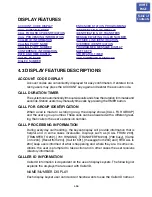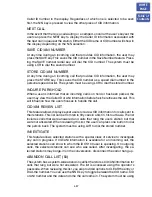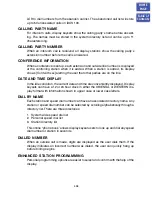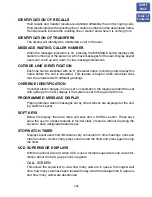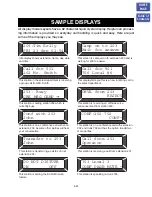
VIRTUAL SINGLE LINE TELEPHONE
The iDCS 100 has 14 virtual extensions. These ports have all the attributes of an
actual SLT port including call forwarding. These virtual ports can be exchanged
with real ports using the set relocation feature to provide hot desking.
VOICE MAIL – INBAND INTEGRATION
The iDCS 100 system uses DTMF tones (inband signaling) to communicate with
any compatible voice mail system. Stations can call forward to a voice mail sys-
tem. When answered, the system will send DTMF tones routing the caller directly to
the called station user’s mailbox. Keyset users can press one button to retrieve
messages from the voice mail system. A Voice Mail Transfer key permits keyset
users to easily transfer a caller directly to an individual voicemail box without navi-
gating through menus.
NOTE: Although most voice mail systems will work with the iDCS 100, the system
data has default values set to work with the Starmail Voice Processing System.
They may need to be changed if you are using another system.
VoIP
The iDCS 100 ITM3 VoIP card supports up to eight voice calls over an IP network
connection using the industry standards based H.323 protocol. An additional eight
VoIP channels can be added by installing an eight-circuit daughterboard for a total
of sixteen channels of VoIP. The ITM3 cards fit into any universal iDCS 100 card
slot. The iDCS 100 supports a maximum of one ITM3 card.
VoIP is transported by the iDCS 100 ITM3 card utilizing the ITU standards based
H.323 protocol. This standard addresses the means of transferring voice, data,
and images through IP (Internet Protocol) networks.
With VoIP certain compression standards have also been adopted to represent
each second of voice with an amount of bandwidth. The iDCS 100 ITM3 utilizes
G.711, G.729A or G.723 standards voice compression codec’s. This allows for a
selectable 64kbps, 8Kbps or 6.3Kbps bandwidth use when preparing voice com-
pression for IP transport. Compression is used to reduce the digitized voice into a
smaller bandwidth that can be carried in smaller packets. The ITM3 H.323 gate-
way determines the compression method for each call setup. There is also a cer-
tain amount of frame/packet overhead in each compression channel. 64K of band-
width can support 6~7 calls simultaneously. This can vary depending on efficiency
features like Silence Suppression and multiframe counts. Unlike switched networks,
VoIP connections consist of a sequence of numbered of data packets. Since voice
conversation is usually considered “real time” these packets need to be delivered
in a consistent manner with minimal delay. This can be controlled via a Gatekeeper
which tracks and monitors voice packets. Gatekeepers are part of the H.323 stan-
dard but are not required. The iDCS 100 ITM3 is Gatekeeper compliant.
4.26
HOME
PAGE
Table of
Contents

